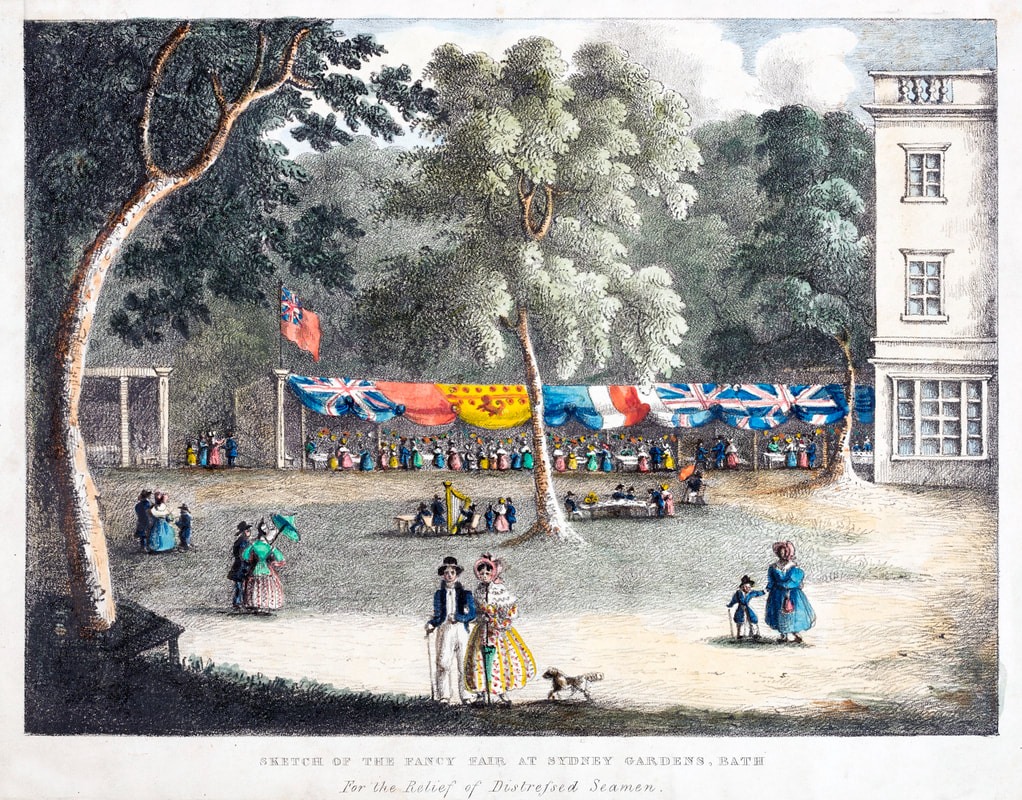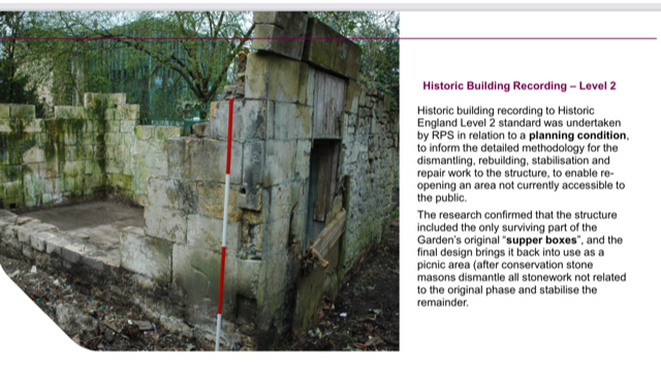The Sydney Gardens Supper Boxes
Sydney Gardens was open to anyone who could afford the entry fee. Entertainments, such as, grand firework displays, acrobats, dancing, concerts and balloon ascents. Visitors might take tea, walk the gardens, read the papers and dine on cold meats and pastries in one of the outdoor shelters known as Supper Boxes.
The experience of dining in the pleasure gardens would have been a novel one, mainly because the concept of public restaurants did not exist. There were taverns, 'ordinaries' and chop houses in eighteenth-century London, providing food for clerks, labourers, and travellers, but these places addressed the necessity of eating, rather than the pleasure of it. Tables were often communal, the clientele predominantly male, and the food on offer limited to basic bread and meat dishes.
The concept of ‘going out’ for a meal in public, as a couple or a family, did not exist, and the modern restaurant, with formal place settings, a menu and a wine list, was a French invention of the 1780s.
Sydney Gardens was therefore unusual, because it hosted diners in a series of open-air Supper Boxes which formed a ring around the centre of the garden, in which visitors could order meat, bread, wine and confectionery. For the first time, the wealthy and the prosperous middle classes were eating in the public gaze, rather than the privacy of home. This social mixing, and the exposure of both respectable and unmarried women to public scrutiny, was one of the many reasons why moralists railed against the gardens, although this did little to dissuade visitors..
The experience of dining in the pleasure gardens would have been a novel one, mainly because the concept of public restaurants did not exist. There were taverns, 'ordinaries' and chop houses in eighteenth-century London, providing food for clerks, labourers, and travellers, but these places addressed the necessity of eating, rather than the pleasure of it. Tables were often communal, the clientele predominantly male, and the food on offer limited to basic bread and meat dishes.
The concept of ‘going out’ for a meal in public, as a couple or a family, did not exist, and the modern restaurant, with formal place settings, a menu and a wine list, was a French invention of the 1780s.
Sydney Gardens was therefore unusual, because it hosted diners in a series of open-air Supper Boxes which formed a ring around the centre of the garden, in which visitors could order meat, bread, wine and confectionery. For the first time, the wealthy and the prosperous middle classes were eating in the public gaze, rather than the privacy of home. This social mixing, and the exposure of both respectable and unmarried women to public scrutiny, was one of the many reasons why moralists railed against the gardens, although this did little to dissuade visitors..
The wings of the Holburne Museum extended out to the left and right side of the Museum.
The existing Supper Box ruin can be seen on the far left of this image.
The existing Supper Box ruin can be seen on the far left of this image.

